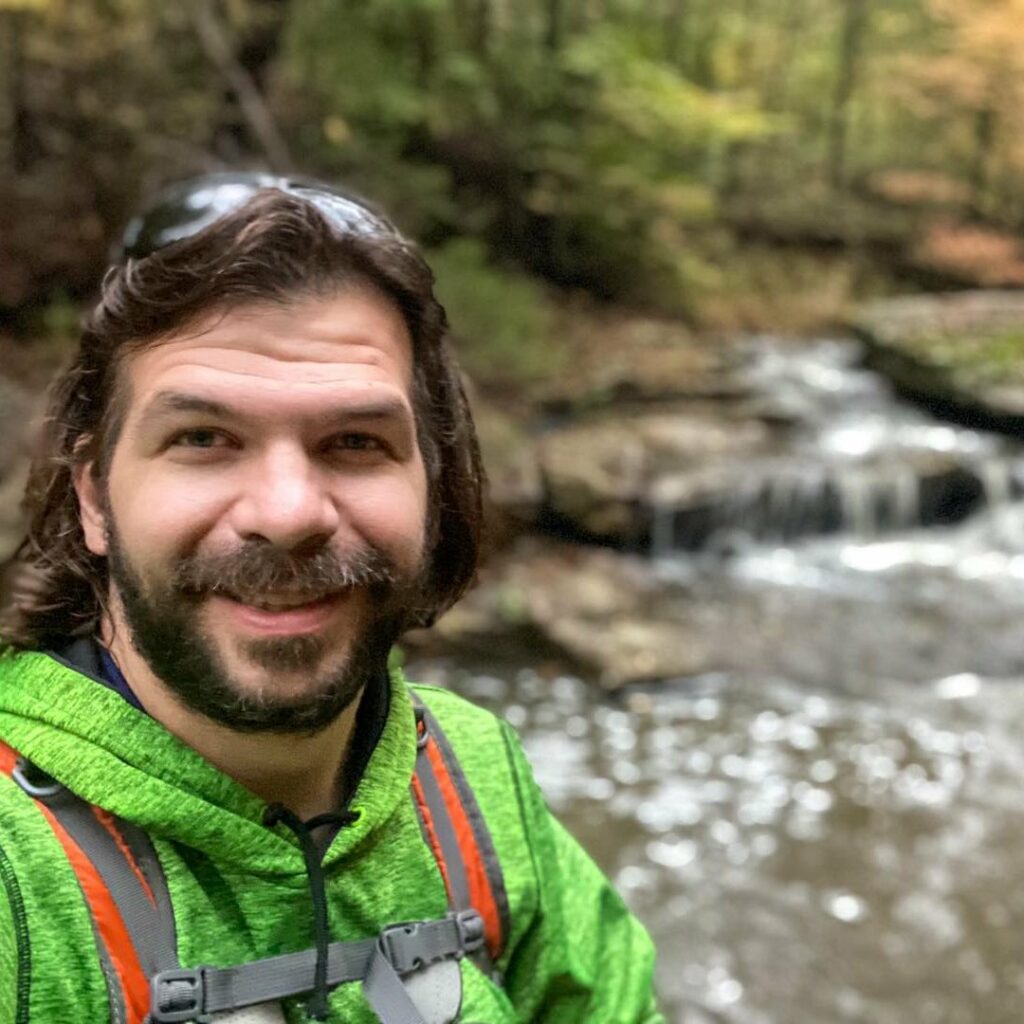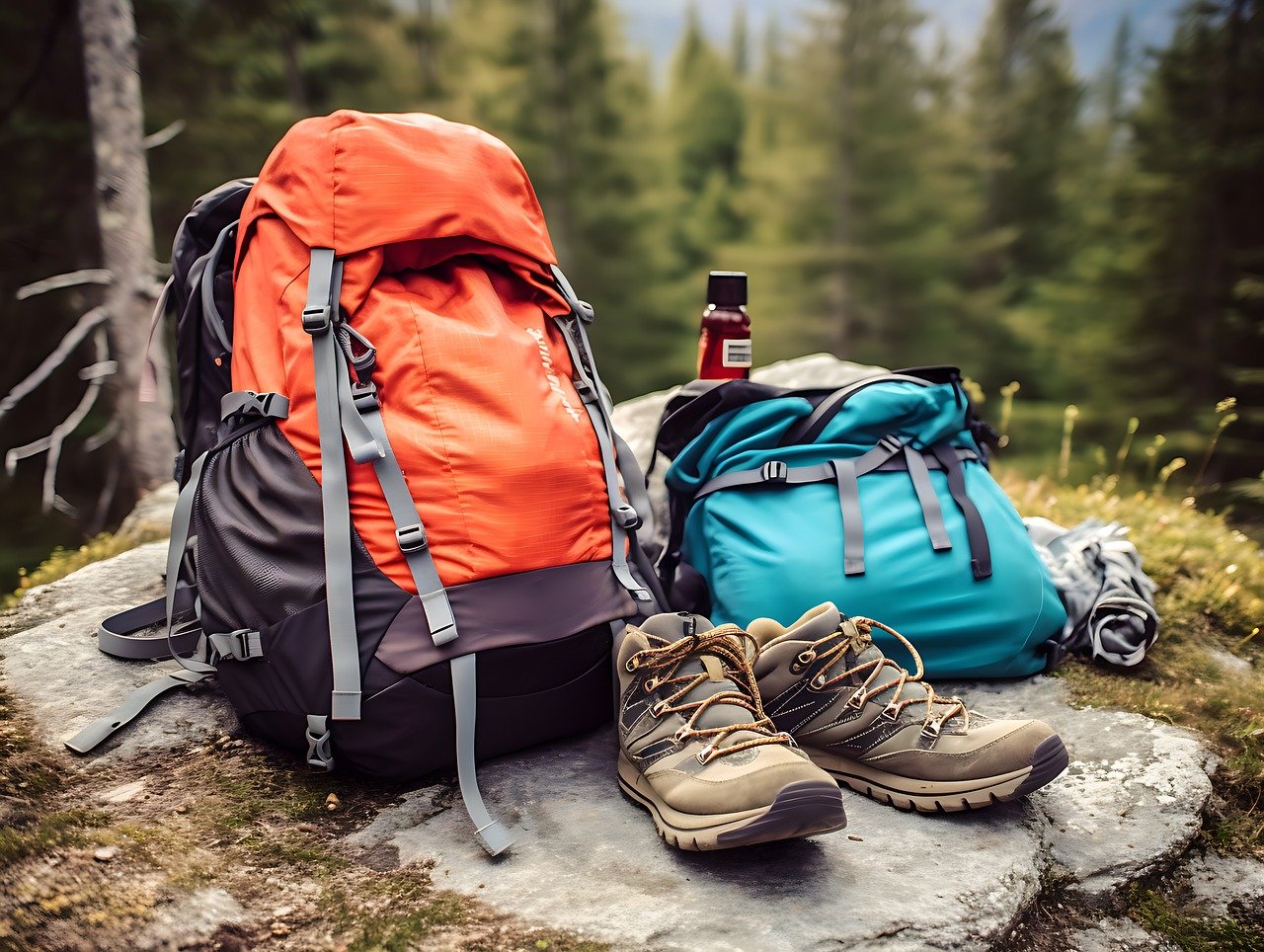How to Hike on a Budget (Guide to Cheap Hiking)
Are you looking to hike on a budget but are worried that it will be too expensive?
I’m sure you’ve heard that hiking is expensive. Expensive clothes, expensive boots. Expensive backpack, expensive trekking polls. All that money just to walk in the woods. It almost seems like it isn’t worth the trouble, right?
Lucky for you, hiking being expensive is pretty much a myth and a common misconception.
You can easily hike on a budget and still enjoy it as much as anyone else. And in this guide, I’m going to show you how to enjoy hiking without breaking the bank.
Hike on a Budget with Rented Gear
There are many different businesses online and even offline that allow you to rent hiking gear.
Maybe you don’t plan to hike that often. You might not be able to get to the trail as much as other people. So, buying a lot of gear might seem too much if you only plan to hike occasionally.
Then rent it instead.
It’s not that expensive to rent hiking gear, either. You can get a full backpacking kit from Kit Lender for under $70. My full backpacking kit costs several hundred dollars!
If you have an REI store or an outdoor equipment outfitter near you, call them and ask if they rent gear. Most of these services typically do rent gear. You’ll give them your credit card information just in case you don’t bring the gear back.
Renting gear might be your best bet to hike on a budget until you know you love hiking enough to get your own stuff.
Hike on a Budget with Used Gear
Used hiking gear is a wonderful option for you if you want to hike on a budget but own your own gear.
There are so many good deals on used hiking gear that people miss out on because they buy new ones instead. Some people will hike once, not enjoy it, and need to sell off their gear. You’ll typically get the gear cheaper and in bundles because they want to get rid of it.
There are numerous Facebook groups where you can buy used hiking gear.
You could also ask local hiking groups and clubs if they know of anyone selling used gear.
And lastly, check out local yard sales, especially in areas with a lot of wooded properties. Hunters usually sell used gear that can easily be used as hiking items.
Repair Your Own Hiking Gear
Hike on a budget by learning how and getting good at repairing your own gear.
Create a gear repair kit.
Learn the basic functions of repairing your hiking gear. These functions include basic sewing, patches, using duct tape, ropes and knots, and waterproofing sprays. If you can learn all these techniques, you’ll be able to repair your gear in no time and save a lot of money in the process.
I use Osprey backpacks. They’re kind of expensive, but they come with a warranty where Osprey will repair them if they get ripped or damaged. That’s free, too. But I’d rather fix it myself because then I don’t have to go through the trouble of sending the pack off and waiting for it to come back.
It feels good to have the knowledge and ability to repair your own gear.
Budget-Friendly Gear Ideas
There are so many different brands of hiking gear available.
You might be able to find cheaper versions of some gear. It’s good to support these brands, especially ones no one has ever heard of.
But sometimes you need stuff even cheaper, and that’s where the following ideas come into play.
Hiking Backpack
Chain retail stores like Walmart, Dick’s Sporting Goods, and Academy all have inexpensive hiking backpacks.
The trick is to make sure you buy one that is big enough to fit your gear ratio. This is typically measured in liters. For day hiking, I’ll typically carry a 36-liter pack. For overnight hiking, I use an 88-liter pack. I’m 6’5” and broad, so I consider that.
But these cheaper backpacks are just as good as my expensive ones, but they typically don’t last as long as the expensive ones do. And they probably don’t have any kind of warranty. But for the time being, they make a very good, cheaper alternative.
Consider a water bladder instead of more expensive hiking water bottles.
Avoid school-styled backpacks for hiking. They typically don’t give you the support you need and can leave you with injuries and a lot of discomfort.
Tent
I have a single-person tent. It’s made with extremely light material, including carbon fiber poles and steaks. It fits me, and that’s it. I can barely squeeze my pack into the tent with me.
It was about $600, and that’s still cheap for that kind of tent.
Do you need a $600 tent? Probably not. I bought one because I’m obsessed with hiking enough that it has become a lifestyle for me.
But I’ve also slept in cheap backpacking tents from the chain stores. They’re a lot heavier to pack around. They don’t last as long. They’re harder to set up. But they are so much cheaper than the high-end ones. You can probably spend under $75 for a good basic one-person backpacking tent.
If you really want to go cheap, buy a hammock instead, but you need to make sure you’ll be in an area with trees that will support it. Hammocks are usually cheap, lightweight, and easy to set up.
An even cheaper route would be using a tarp. You usually won’t have full coverage, but you can at least have a cover over you. Tarps generally cost $20 or less. Add some paracord, and you can create a great shelter for your next camping adventure.
Other Gear
Some of the most common everyday items we use can be used as hiking gear alternatives.
They’re usually a lot cheaper than actual hiking gear, too.
For example, a simple trash bag liner in your backpack can replace dry sacks and hiking gear bags. Trash bags are cheap compared to the dry sacks and hiking bags on the gear market.
Use a nice big stick you found on the trail instead of buying trekking poles. Most of the time, you can get cheap chemicals to rub on the stick to keep it preserved and strong. A stick is free. Most trekking poles are over $100 for the better ones.
Empty drink bottles are some of the best bottles to take hiking. I don’t use fancy, expensive water bottles for my hiking adventures. I use the same Gatorade bottle that I’ve used for the past few years. I just wash it out like the rest of my dishes and reuse it. Smart Water bottles also make great hiking water bottles.
One cooking cup is all you need for all your hiking kitchen needs. You can brew coffee or a hot drink in it and use it to drink out of. Then you can use it to cook breakfast and dinner with and eat out of it. Just bring enough water to scrub it clean for multiple uses. It will save you a lot of money in the end.
And on the topic of kitchen items, a simple plastic fork, spoon, and knife kit is all you need for that. You can wash and reuse them, and they cost so little compared to outdoor-branded utensils.
Try to look around and see what other everyday items you can use to hike on a budget and replace expensive gear items with.
Cheaper Hiking Clothes and Footwear
Hiking clothes and footwear are some of the most expensive items out there.
I learned fast to buy cheaper brands, so I’m not spending a fortune. And you can go with cheaper brands and still get comfort and durability.
I wear a lot of compression apparel when I hike. I have issues with chaffing and have always found tight-fitting clothing comfortable when I biked, so I wear it hiking, too. That sort of clothing can be very expensive. Brands like Lululemon, Under Armor, Runjanji, and Gore Wear are typically $100 for compression shorts and over $150 for leggings.
But after shopping around, I found that Baleaf offers these types of clothing for less than $50 for each piece. I bought a pair of half-tights with a liner in them the other day for less than $30. They look good, they’re not transparent, and they’re comfortable.
The same goes for hiking pants and regular hiking shorts. I get cheaper brands from Amazon that no one has ever heard of, and I’m paying significantly less than expensive ones.
It seems like most people are paying for a name these days.
When it comes to footwear, it’s the only thing I recommend not going cheap for. Your feet are your biggest asset. Protecting them and keeping them comfortable is extremely important. I wouldn’t spend anything less than $200 for a decent pair of waterproof boots for winter hiking. I need my feet to stay dry and warm during cold weather hikes.
In the end, just try to shop around and find stuff that is marked way down, and don’t be afraid to use items that aren’t exactly branded for hiking.
As you can see, it’s easy to hike on a budget if you take the tips above to thought when looking at getting more outdoor gear. If you’ve enjoyed this article and want to see more like it, please consider supporting me by leaving a one-time donation or becoming a monthly contributor. Be sure to subscribe to my free monthly newsletter for more hiking tips and resources.
Please Support Hiking with Shawn
Alrighty folks, I hope you have enjoyed this content. I provide it for free and it takes a while to create. If you would be so kind enough to support my efforts, you can do so by sharing this post with others, especially on social media. Be sure to subscribe to my YouTube Channel to see my latest videos, shorts and live streams. Follow me on Facebook, Instagram, Twitter and TikTok for unique content that you will only find on those pages. You might also join my Southern Illinois Hiking & Outdoor Resources Group on Facebook, too!
You can also support me by becoming a Patreon Supporter for as little as $3/month and you can cancel anytime (no contracts or catches). Patreons get access to extra features, exclusive articles, sticker packs, gifts and more. Consider buying official Hiking with Shawn Merchandise as another way to support me. I spend a lot of money on Hiking with Shawn and because of extremely high public land permit fees, I make very little money in return so everything helps.
Thanks again for checking out another one of my articles and until next time, I’ll see you on the trail!

Shawn Gossman
Founder, Hiking with Shawn
Howdy folks! My name is Shawn Gossman and I founded Hiking with Shawn. I’m an avid hiker, cyclist and outdoorsman here in the Shawnee National Forest. I was born and raised in Southern Illinois and never want to leave. Click here to learn more about Shawn Gossman


